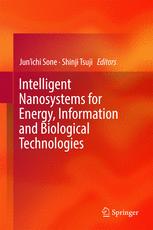
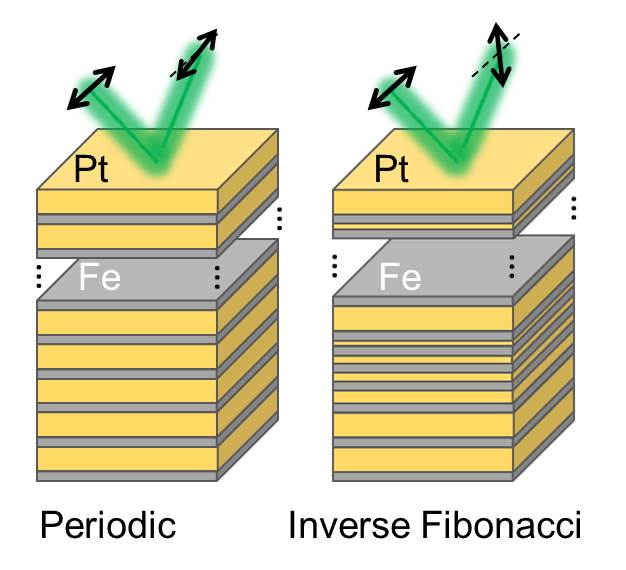
45. "Enhanced Magneto-Optical Activities of Modulated Fe-Pt Multilayer Metamaterials",
Satoshi Tomita*, Tomomi Suwa, Patricia Riego, Andreas Berger, Nobuyoshi Hosoito, Hisao Yanagi
Physical Review Applied, Vol. 11, No. 6, 064010 (8pp), June 2019.
[PRAppl online],
[naistar],
![]()
DOI: 10.1103/PhysRevApplied.11.064010
Enhancing the magneto-optical (MO) response of magnetic films and nanostructures
is an important issue for a wide variety of applications,
including biosensing.
Past success via multilayer stacking has been focused primarily
on symmetric or periodic geometries.
Here, however, the authors find that a quasiperiodic structure
exhibits a far larger MO response than a similar periodic structure,
over a broad spectral range, even though both samples have otherwise
very similar magnetic and optical properties.
Model calculations based on local optical properties fail
to describe this behavior;
more fundamental, nonlocal effects must be the origin
of the massively enhanced MO signal.

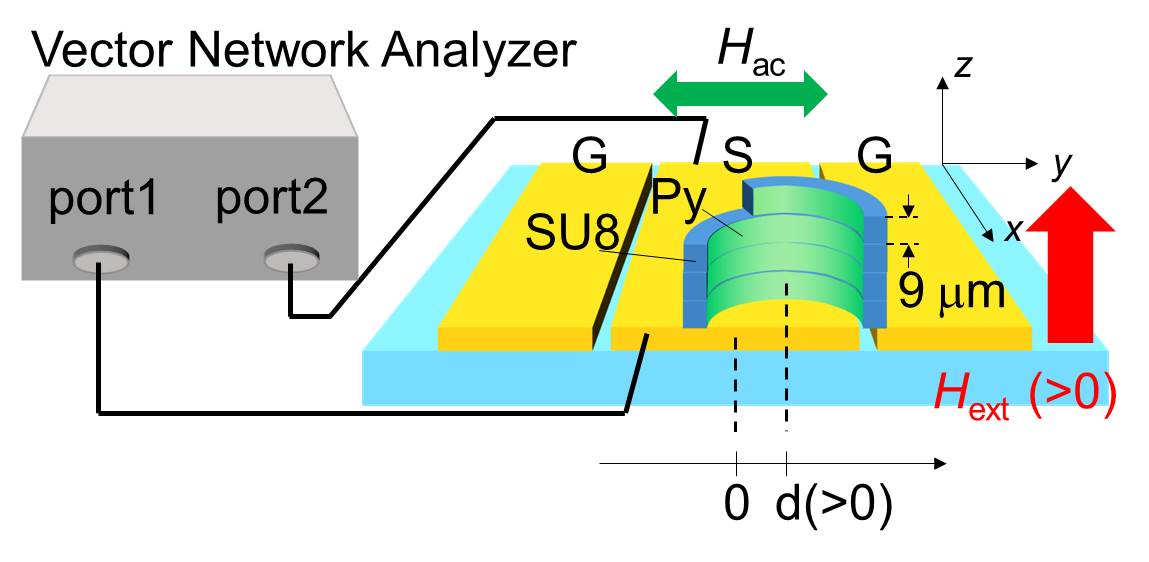
44. "Microwave Spectroscopy of a Single Permalloy Chiral Metamolecule on a Coplanar Waveguide",
Toshiyuki Kodama, Yusaku Kusanagi, Satoshi Okamoto, Nobuaki Kikuchi, Osamu Kitakami,
Satoshi Tomita*, Nobuyoshi Hosoito, Hisao Yanagi
Physical Review Applied, Vol. 9, 054025(6pp), May 2018.
[PRAppl online],
[naistar],
![]()
DOI: 10.1103/PhysRevApplied.9.054025
A metamaterial's properties primarily originate from
those of its component metamolecules,
which makes single-metamolecule spectroscopy important
for input in designing a metamaterial.
However, detailed spectroscopic studies have been out of reach,
due to the difficulties in manipulating individual micrometer-scale metamolecule.
This work utilizes a coplanar waveguide
to study the microwave transmission spectrum of a single magnetic chiral metamolecule,
revealing its magnetic resonance and nonreciprocity signals.
This approach could have real impact on high-throughput metamaterial engineering.

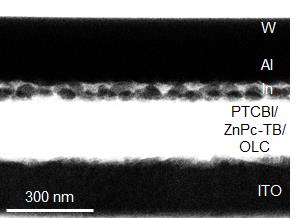
43. "Organic photovoltaic cells with onion-like carbon thin films as hole collection layers",
Hitoshi Mizuno*, Kazunori Nagano, Satoshi Tomita, Hisao Yanagi, Ichiro Hiromitsu
Thin Solid Films, Vol. 654, pp. 69-76, May 2018.
[TSF online],
[naistar],
DOI: 10.1016/j.tsf.2018.03.074
Highlights:
Ionization potential and optical bandgap were evaluated in ZnPc-TB and OLC films.
ZnPc-TB-based solar cells incorporating an OLC interlayer were fabricated.
Shunt resistance of the OLC-inserted solar cell is higher by a factor of 5.5.
J-V characteristics indicate that the OLC interlayer serves as a hole collection layer.

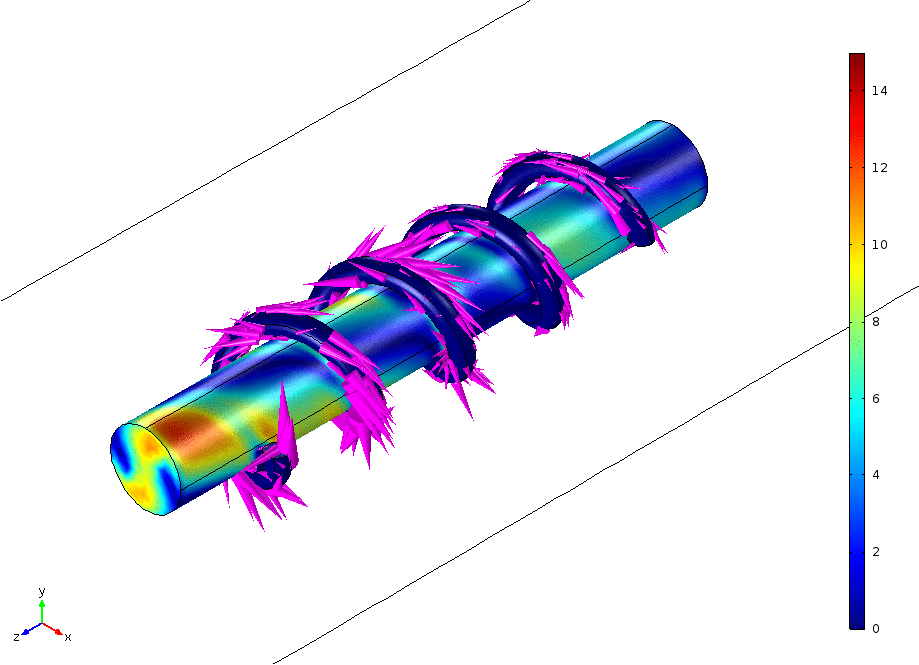
42. [Topical Review]
"Metamaterials with magnetism and chirality",
Satoshi Tomita*, Hiroyuki Kurosawa, Tetsuya Ueda, Kei Sawada
Journal of Physics D: Applied Physics, Vol. 51, No. 8, 083001(37pp), February 2018.
[JPD:Apph online],
[naistar],
[
Accepted manuscript
![]() ],
Supplemental Material:
[Fig.S1]
[Fig.S2]
[Fig.S3]
[Fig.S4]
],
Supplemental Material:
[Fig.S1]
[Fig.S2]
[Fig.S3]
[Fig.S4]
DOI: 10.1088/1361-6463/aa9ecb
This review introduces and overviews electromagnetism in structured metamaterials
which undergo simultaneous time-reversal and space-inversion symmetry breaking
due to magnetism and chirality.
Direct experimental observation of optical magnetochiral effects
in a single metamolecule with magnetism and chirality
is demonstrated at microwave frequencies.
Numerical simulations based on a finite element method
reproduce the experimental results well,
and predict the emergence of giant magnetochiral effects,
by combining resonances in the metamolecule.
Toward the realization of magnetochiral effects at higher frequencies than microwaves,
a metamolecule is miniaturized in the presence of ferromagnetic resonance
in a cavity and coplanar waveguide.
This work opens the door to the realization of a one-way mirror
and synthetic gauge fields for electromagnetic waves.

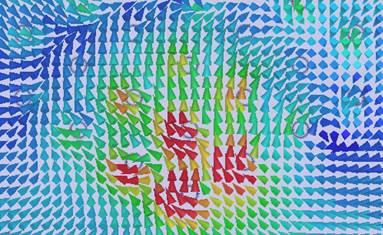
41. "Observation of asymmetric electromagnetic field profiles in chiral metamaterials",
Nobuyuki Hisamoto, Tetsuya Ueda*, Kei Sawada, Satoshi Tomita
Physical Review B, Vol. 97, 085105(6pp), February 2018.
[PRB online],
[naistar],
![]()
DOI: 10.1103/PhysRevB.97.085105
We experimentally observe asymmetric electromagnetic field profiles
along two-dimensional chiral metamaterials.
The asymmetric field profiles depending on the chirality and the operation frequency
have been reproduced well by the numerical simulation.
Around a chiral meta-atom, distribution of a Poynting vector
is found to be shifted asymmetrically.
These results are explained in terms of an analogy with the side-jump mechanism
in the electronic anomalous Hall systems.

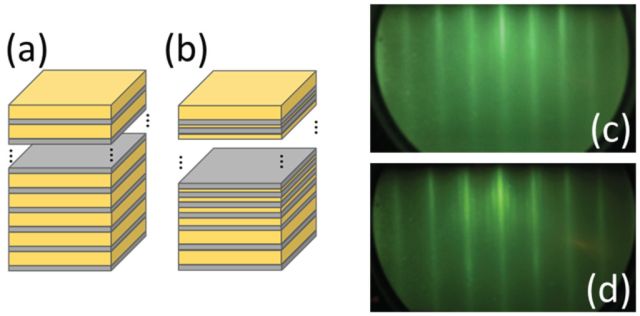
40. "Magnetic Properties of Fibonacci-Modulated Fe-Au Multilayer Metamaterials",
Tomomi Suwa, Satoshi Tomita*, Nobuyoshi Hosoito, Hisao Yanagi
Materials, Vol. 10, Issue 10, 1209(7pp), October 2017
(Feature Paper, Communications in Special issue "Advance in Plasmonics and Metamaterials")
[Materials online],
[naistar],
![]()
DOI: 10.3390/ma10101209
Herein we experimentally study magnetic multilayer metamaterials
with broken translational symmetry.
Epitaxially-grown iron-gold (Fe-Au) multilayers modulated using Fibonacci
sequence -- referred to as magnetic inverse Fibonacci-modulated multilayers (IFMs)--
are prepared using ultra-high-vacuum vapor deposition.
Experimental results of in-situ reflection high-energy electron diffraction,
magnetization curves, and ferromagnetic resonance
demonstrate that the epitaxially-grown Fe-Au IFMs have quasi-isotropic magnetization,
in contrast to the in-plane magnetization easy axis in the periodic multilayers.

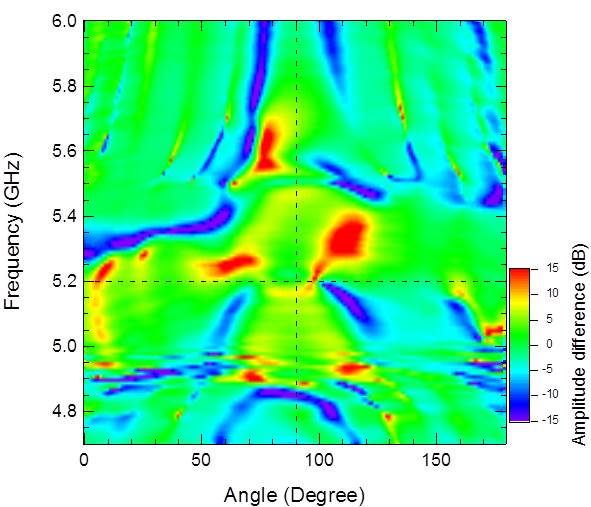
39. "Microwave analog of Stern-Gerlach effects using nonuniform chiral metamaterials",
Satoshi Tomita*, Kei Sawada, Shotaro Nagai, Atsushi Sanada, Nobuyuki Hisamoto, Tetsuya Ueda
Physical Review B, Vol. 96, 165425(8pp), October 2017.
[PRB online],
[naistar],
![]()
DOI: 10.1103/PhysRevB.96.165425
This paper reports on a microwave analogue of the Stern-Gerlach (SG)
effects using nonuniform chiral metamaterials. The original SG
experiment was a milestone in the history of quantum theory,
demonstrating the existence of an electronic spin degree of freedom. In
the SG effects, particles with opposite spins will go their separate
ways in a nonuniform magnetic field. While an optical analog of the
atomic beam SG effect can be realized by using polarized materials (e.g.,
chiral materials), direct observation of the SG effects for light was
lacking. In the reported study, the chiral meta-atoms are used to
construct nonuniform chiral metamaterials with refractive index gradient.
An atomic beam and non-uniform magnetic field in the original SG
experiment correspond respectively to a microwave and non-uniform
distribution of the chiral meta-atoms in this experiment. Circularly
polarized microwaves with opposite "spins of light" go their separate
ways in the nonuniform chiral metamaterial. Since the splitting is
traced back to artificial magnetic fields for microwaves, this work
opens the way for synthetic gauge fields for light using metamaterials.

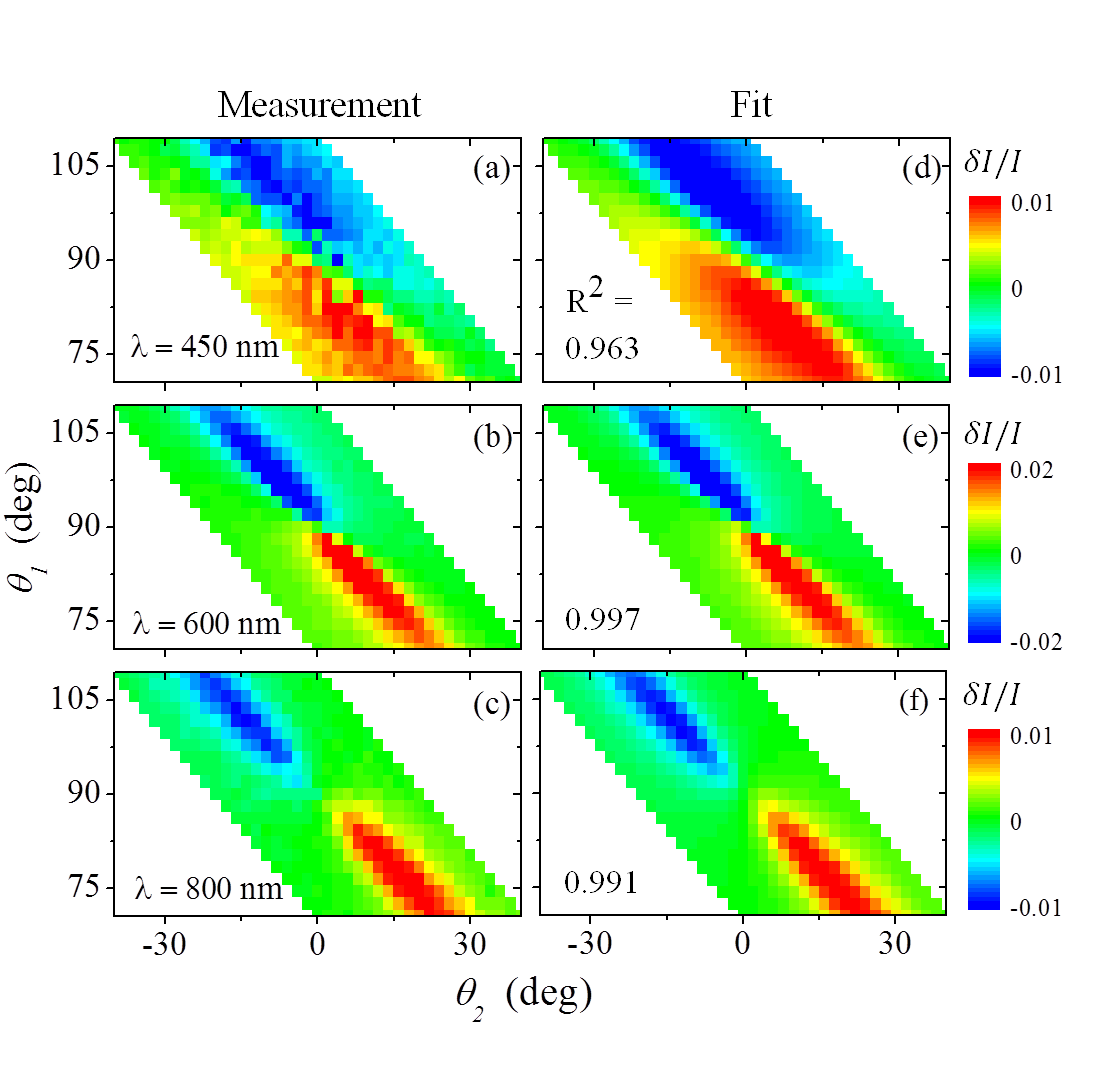
38. "Enhanced magneto-optical Kerr effects in Py/Ag/Bi trilayers",
Patricia Riego, Satoshi Tomita*, Kaoru Murakami, Toshiyuki Kodama,
Nobuyoshi Hosoito, Hisao Yanagi, Andreas Berger
Journal of Physics D: Applied Physics, Vol. 50, 19LT01(5pp), April 2017.
[JPD online],
[naistar],
![]()
DOI: 10.1088/1361-6463/aa69f9
We study the magneto-optical (MO) response of permalloy/silver/bismuth
(Py/Ag/Bi) trilayer samples in reference to a control Py film
by means of spectroscopic generalized MO ellipsometry.
The trilayer structures show enhanced MO Kerr amplitude values compared to
optical multilayer calculations based upon the Py film reference measurements,
especially in the near-infrared region.
This indicates that the optical interference conditions accounted for in the model
are not sufficient to explain the influence of the Ag/Bi bilayer in the structure.
Instead, the local optical and MO properties of the Py layer itself
must be modified by the presence of the Ag/Bi bilayer,
which could be caused by enhanced effective spin-orbit coupling.

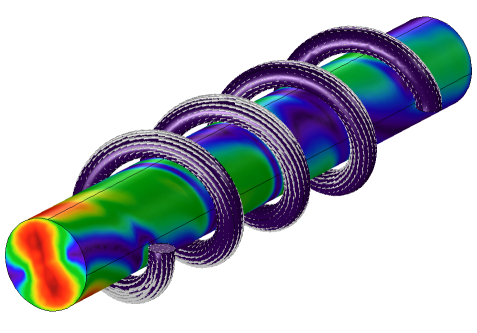
37. "Enhanced magnetochiral effects at microwave frequencies by a single metamolecule",
Satoshi Tomita*, Hiroyuki Kurosawa, Kei Sawada, Tetsuya Ueda
Physical Review B, Vol. 95, 085402(12pp), February 2017.
[PRB online],
[naistar],
![]()
DOI: 10.1103/PhysRevB.95.085402
This study opens a door to the realization of
a room-temperature direction-switchable one-way mirror.
One-way light transmission can be achieved through optical directional birefringence,
referred to in this paper as magnetochiral (MCh) effects.
While enhanced MCh effects by a metamolecule at microwave frequencies
have been recently reported,
the enhancement mechanism was unclear.
In this paper, we experimentally and numerically investigate the MCh effects
to uncover the underlying physics in the enhancement.
Furthermore, we predict the MCh effect to be significantly enhanced
through the coexistence of two specific resonances in the metamolecule.
In basic physics, the quest for giant MCh effects paves the way
toward the realization of a synthesized "magnetic field" for light,
and meta-condensed-matter physics using metamaterials.
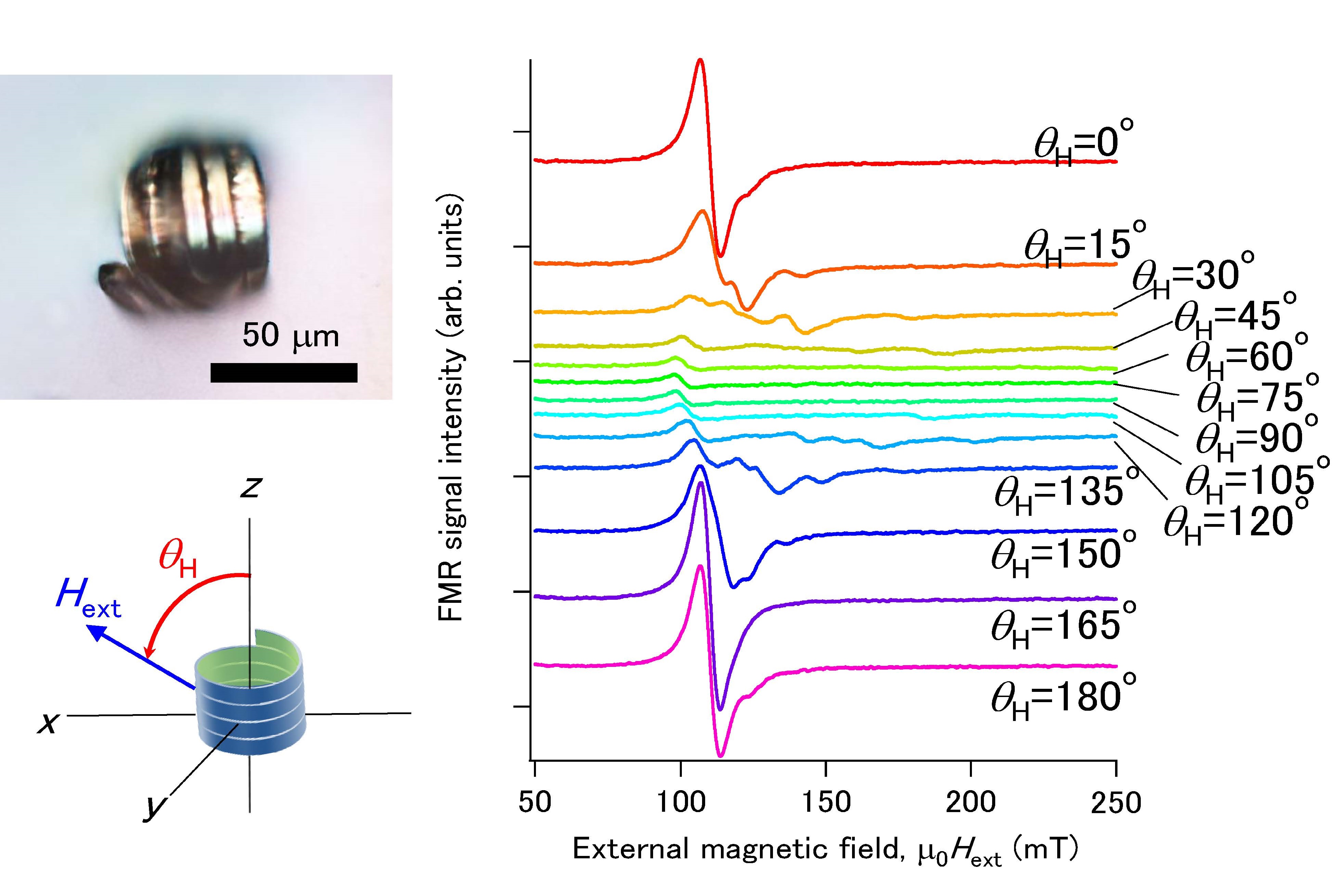
36. "Ferromagnetic Resonance of a Single Magnetochiral Metamolecule of Permalloy",
Toshiyuki Kodama, Satoshi Tomita*, Takeshi Kato, Daiki Oshima,
Satoshi Iwata, Satoshi Okamoto, Nobuaki Kikuchi, Osamu Kitakami,
Nobuyoshi Hosoito, Hisao Yanagi
Physical Review Applied, Vol. 6, 024016, August 2016.
[PRAppl online],
[naistar],
![]()
DOI: 10.1103/PhysRevApplied.6.024016
We often consider bulk metamaterials with engineered electromagnetic properties,
or even metasurfaces, but what about an individual metamolecule?
The authors study the magnetization configuration of an isolated,
micrometer-sized metamolecule, designed and cleverly fabricated
to break both space-inversion and time-reversal symmetry.
Such a system could be used for a one-way mirror controlled by magnetic field,
or as an artificial multiferroic material operating at convenient fields
and temperatures.
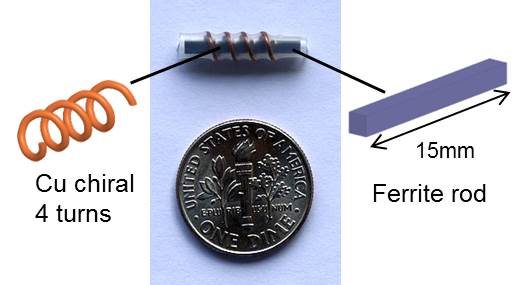
35. "Direct Observation of Magnetochiral Effects through a Single Metamolecule in Microwave Regions",
Satoshi Tomita, Kei Sawada, Andrey Porokhnyuk, Tetsuya Ueda
Physical Review Letters, Vol. 113, 235501, December 2014.
[PRL online],
[naistar],
![]()
DOI: 10.1103/PhysRevLett.113.235501
We found a novel route to a "one-way mirror" using an artificial molecule
-- metamolecule -- with a simultaneous break in time-reversal and space-inversion symmetries.
The metamolecule consists of a Cu helix round a magnetic ferrite rod,
which mimics chirality as being coupled to magnetism in microwave regions.
This results in directional anisotropy, called magnetochiral effects,
of microwaves under a weak static magnetic field.
The directional difference of refractive indices by the effect of the metamolecule
is several orders of magnitude larger than previous studies of natural materials.
Thanks to the simplicity of the molecular structure,
the effects can be enhanced by using resonances and making a metamaterial with the metamolecules.
Such metamaterials enable us to realize Lorentz force on light and a one-way mirror.
The achievement of this work significantly advances the physics of optics,
multiferroic phenomena, and metamaterials.
34. "Lifetime reduction of a quantum emitter with quasi-periodic metamaterials",
Yuto Moritake, Kazuyuki Nakayama, Toshihiro Suzuki, Hiroyuki Kurosawa, Toshiyuki Kodama,
Satoshi Tomita, Hisao Yanagi, Teruya Ishihara,
Physical Review B, Vol. 90, 075146, August 2014.
[PRB online],
[naistar],
![]()
DOI: 10.1103/PhysRevB.90.075146
Enhancement of light-matter interaction of a quantum emitter with subwavelength quasiperiodic metamaterials is proposed and demonstrated.
The quasiperiodic metamaterials consist of subwavelength metal-dielectric multilayers,
which are arranged into a Fibonacci lattice.
The influence of Fibonacci metamaterials (FM) on the dipole emission is analyzed with a semiclassical model.
The local density of states near FM is evaluated and a characteristic mode in higher wave numbers is revealed;
a strong enhancement of the decay rate was predicted.
A lifetime measurement is carried out and a reduction of lifetime of quantum dots on the surface of FM is observed.
The enhancement of light-matter interaction arises from the localized latticelike state
inherent for self-similar quasiperiodic order.

33. "Chiral meta-interface: Polarity reversal of ellipticity through double layers consisting of transparent chiral and absorptive achiral media",
Satoshi Tomita, Yuuka Kosaka, Hisao Yanagi, Kei Sawada,
Physical Review B 87, 041404(Rapid Communications), January 2013.
[PRB online],
[naistar],
![]()
DOI: 10.1103/PhysRevB.87.041404
It seems that sugar and magnets have little in common, however, this study reveals that
a micro-sized sugar cube with a red-colored facet "looks" to circularly polarized light like a magnet.
In this study, we prepared non-magnetic double-layer films consisting of a form of sugar, called glucose,
and a red-colored dye, called rhodamine, then we studied the absorption of circularly polarized light
in the visible region. Surprisingly, the result was very similar not to that of sugar but to that of a magnet
even though we did not apply any magnetic fields. The key to this curious similarity is a symmetry breaking
-- the interface between transparent chiral and absorptive achiral media in the double-layer films is essential.
Thus, we call this a "chiral meta-interface", in which "meta" means "beyond" or "higher".
The chiral meta-interface will pave the way for exploring new optical phenomena.
32. "Chiral meta-molecules consisting of gold nanoparticles and genetically engineered tobacco mosaic virus",
Mime Kobayashi, Satoshi Tomita, Kei Sawada, Kiyotaka Shiba, Hisao Yanagi, Ichiro Yamashita, Yukiharu Uraoka,
Optics Express, Vol. 20, Issue 22, pp. 24856-24863, October 2012.
[in Optics Express]
![]()
DOI: 10.1364/OE.20.024856
*Optics Express is available free to readers via the Web.
We demonstrate a chiral meta-molecule in the ultraviolet (UV) and visible (VIS) regions
using a complex of Au nanoparticles (NPs) and rod-shaped tobacco mosaic virus (TMV).
Au NPs five nm in diameter are uniformly formed on peptide-modified TMV.
The peptide-modified TMV with uniform-sized Au NPs has improved dispersion in solution.
A negative circular dichroism (CD) peak is produced around 540 nm,
at plasmonic resonance wavelength of Au NPs.
Additionally, modification of a CD peak in the UV region is observed.
Attaching NPs to a virus causes the enhancement and modification of CD peaks in both the UV and VIS regions.
Our results open a new avenue for the preparation of three dimensional chiral metamaterials at optical frequencies.
31. "Analytic Solution of Landau-Lifshitz-Gilbert Equation in Magnetic Resonance due to Spin Torque Oscillation",
Chiharu Mitsumata and Satoshi Tomita,
Journal of the Magnetics Society of Japan, Vol. 36, pp. 301-303 (Letter), June 2012.
[on J-STAGE]
DOI: 10.3379/msjmag.1206R004
We theoretically study the Landau-Lifshitz-Gilbert equation in a magnetic resonant state
due to spin transfer oscillation. An analytic formula of the Gilbert damping
for the macroscopic spin is derived. The formula shows a linear relation
between the effective Gilbert damping factor and the spin current.
30. "Gold Nanoparticle-Induced Formation of Artificial Protein Capsids",
Ali D. Malay, Jonathan G. Heddle, Satoshi Tomita, Kenji Iwasaki,
Naoyuki Miyazaki, Koji Sumitomo, Hisao Yanagi, Ichiro Yamashita, Yukiharu Uraoka,
Nano Letters, Vol. 12, Issue 4, pp. 2056-2059, March 2012.
[NanoLett online]
DOI: 10.1021/nl3002155
*This paper has been selected for an Article ASAP.
Hollow, polyhedral proteins are commonly found in nature and are of great interest
to nanoscience because of their potential to act as cargo carriers and nano-reaction
vessels. Designing and building such structures, however, remains problematic.
Here we show that the ring-shaped protein TRAP (trp RNA-binding attenuation protein)
can be engineered such that in benign reaction conditions, its normally stable
structure can undergo an unusual transformation, and form a hollow sphere-like particle
reminiscent of a virus capsid. This transition occurs due to a previously unreported
role of gold nanoparticles, which appear to catalyze the protein remodeling.
29. "Control of Gilbert damping using magnetic metamaterials",
Chiharu Mitsumata and Satoshi Tomita
Physical Review B 84, 174421 (6 pages), November 2011.
[PRB online],
[naistar],
![]()
DOI: 10.1103/PhysRevB.84.174421
We found a way to control the dissipation of magnetic energy in magnetic
metamaterials consisting of magnetic nanoparticles. It is no exaggeration to say that
research in the field of metamaterials is always facing a demand to suppress
energy losses. In magnetic metamaterials, the loss involves the dissipation
by damping of motion of magnetization. In nature, the damping factor
(Gilbert damping factor) is specific in materials. Theoretical consideration
in the present paper, however, revealed that the macroscopic damping factor of
magnetic metamaterials can be tailored. This can be achieved by controlling
the internal structures of metamaterials, even though concentration of
the nanoparticles is unchanged. This work could be a major step towards
realization of metamaterials with low energy loss. In addition,
this work opens an avenue to a new relationship between metamaterials and spintronics.
28. "Transformation of nano-diamonds to carbon nano-onions studied by X-ray diffraction and molecular dynamics",
L. Hawelek, A. Brodka, S. Tomita, J.C. Dore, V. Honkimaki, and A. Burian
Diamond and Related Materials Vol. 20, 1333-1339, November 2011.
[DRM online]
DOI: 10.1016/j.diamond.2011.09.008
The transformation of ultra-dispersed diamond nanoparticles of about 50 A in diameter
into carbon nano-onions has been studied by high-energy X-ray diffraction and
molecular dynamics simulations using the reactive empirical bond order potential.
Structural models have been constructed for pristine nano-diamonds and nano-diamonds
annealed at 1673 K, 1973 K and 2273 K. These models have been relaxed using the
molecular dynamics method and the model based structure factors and the pair
correlation functions are compared with the experimental data. All model
relaxations and the X-ray diffraction experiments have been carried out at 300 K.
Two starting models consisting of 5460 atoms with a single diamond core and
an amorphous-like outer shell and for a twinned diamond core and a similar
amorphous outer shell containing in total about 13,500 atoms reproduced
correctly features of the experimental data. The atomic models of two
intermediate and final fully graphitized structures, consisting of the same
numbers of atoms and containing the series of defected icosahedral fullerenes
describe satisfactorily the atomic arrangements for the samples annealed
at 1673 K, 1973 K and 2273 K.
27. "Fabrication of Carbon Nanotube/Zinc Oxide Conposite Films by Electrodeposition",
Tomoya Kuwajima, Yusuke Nakanishi, Aishi Yamamoto, Kazuyuki Nobusawa, Atsushi Ikeda,
Satoshi Tomita, Hisao Yanagi, Keigo Ichinose, Tsukasa Yoshida
Japanese Journal of Applied Physics, Vol. 50, 085504 August 2011.
[JJAP online]
DOI: 10.1143/JJAP.50.085504
26. "Resonant photon transport through metal-insulator-metal multilayers
consisting of Ag and SiO$_{2}$",
Maiko Yoshida, Satoshi Tomita, Hisao Yanagi, and Shinji Hayashi
Physical Review B, Vol. 82, 045410 (7 pages), July 2010.
[PRB online],
[naistar],
![]()
DOI: 10.1103/PhysRevB.82.045410
Evanescent waves of light can convey information of sub-wavelength
structures, for example, nanoparticles, polymers, or proteins, but
usually decay exponentially. So, how can we transport the evanescent
waves of light for long distance? This is one of the important questions
for the metamaterial superlens that enables us to realize sub-wavelength
imaging beyond the diffraction limit. In order to answer the question,
this paper describes experimental and numerical studies of resonant
photon transport through multilayers consisting of silver and insulator.
The authors have clearly demonstrated that the complex, at times,
interplay between various electromagnetic modes including surface
plasmon polaritons in the metal-insulator-metal (MIM) system is
important to obtain large tunneling probabilities over relatively large
distances approaching the wavelength. Moreover, this study suggests that
a possible application of plasmonic MIM structures will be a novel type
of hyperlens, which converts evanescent waves to propagating waves of
light.
25. "Surface-emitting dye-doped polymer laser coupled with stimulated
resonant Raman scattering",
Hisao Yanagi, Hidetaka Miyamoto, Atsushi Ishizumi, Satoshi Tomita,
Kenichi Yamashita, and Kunishige Oe
Applied Physics Letters, Vol. 96, 263304 (3 pages), July 2010.
[APL online]
DOI: 10.1063/1.3459967
*This article is available free to readers via the Web.
24. "Electron magnetic resonance in interacting ferromagnetic-metal nanoparticle systems:
experiment and numerical simulation",
Chiharu Mitsumata, Satoshi Tomita, Masayuki Hagiwara, and Kensuke Akamatsu
Journal of Physics: Condensed Matter, Vol. 22, Issue 1, 016005 (10 pages), January 2010.
[JPCM online]
DOI: 10.1088/0953-8984/22/1/016005
23. "Dye-doped polymer microring laser coupled with stimulated resonant Raman scattering",
Hisao Yanagi, Rei Takeaki, Satoshi Tomita, Atsushi Ishizumi, Fumio Sasaki,
Kenichi Yamashita, and Kunishige Oe
Applied Physics Letters, Vol. 95, 033306, July 2009.
[APL online]
DOI: 10.1063/1.3183586
22. "Photoluminescence through Intermolecular Long Distance Energy Transfer
Mediated by Surface Plasmons",
Takayuki Shimada, Satoshi Tomita, Shu Hotta, Shinji Hayashi, and Hisao Yanagi
Japanese Journal of Applied Physics, Vol. 48, 042001, April 2009.
[JJAP online]
DOI: 10.1143/JJAP.48.042001
21. "Resonant photon tunneling via surface plasmon polaritons through
one-dimensional metal-dielectric metamaterials",
Satoshi Tomita, Takashi Yokoyama, Hisao Yanagi, Ben Wood, John B. Pendry,
Minoru Fujii and Shinji Hayashi
Optics Express, Vol. 16, Issue 13, pp. 9942-9950, June 2008.
[Optics Express],
[OSA Optics InfoBase],
[naistar],
![]()
DOI: 10.1364/OE.16.009942
*Optics Express is available free to readers via the Web.
20. "Nanocomposite Polymeric Microspheres Containing Ni Nanoparticles
with Controlled Microstructures",
Kensuke Akamatsu, Satoshi Adachi, Takaaki Tsuruoka, Shingo Ikeda,
Satoshi Tomita, and Hidemi Nawafune,
Chemistry of Materials, Vol.20, No.9, pp.3042-3047, April 2008.
[CM online]
DOI: 10.1021/cm7030152
19. "Negative permeability of magnetic nanocomposite films for designing left-handed meta-materials",
Chiharu Mitsumata and Satoshi Tomita
Applied Physics Letters, Vol.91, 223104, November 2007.
[APL online],
[naistar],
![]()
DOI: 10.1063/1.2816894
*This paper has been selected for the December 10, 2007 issue of Virtual Journal of Nanoscale Science & Technology.
[VJNST]
18. "Controlled magnetic properties of Ni nanoparticles embedded in polyimide films",
Satoshi Tomita, Petra E. Jonsson, Kensuke Akamatsu, Hidemi Nawafune, and Hajime Takayama
Physical Review B, Vol.76, 174432, November 2007.
[PRB online],
[naistar],
![]()
DOI: 10.1103/PhysRevB.76.174432
17. "Spectroscopic Ellipsometry of Yttrium-iron Garnet Thin Films Containing Gold Nanoparticles",
Satoshi Tomita, Minoru Fujii, Shinji Hayashi, Asuka Terai, and Nataliya Nabatova-Gabain
Japanese Journal of Applied Physics, Part 2 (Letters), Vol.46, No.42 pp.L1032-L1034, October 2007.
[JJAP online]
DOI: 10.1143/JJAP.46.L1032
16. "Magneto-Optical Kerr Effects of Yttrium Iron Garnet Thin Films Incorporating Gold Nanoparticles",
Satoshi Tomita, Takeshi Kato, Satoshi Iwata, Shigeru Tsunashima,
Minoru Fujii, Shinji Hayashi,
Physical Review Letters, Vol. 96, 167402, April 2006.
[PRL online],
[Erratum],
![]()
DOI: 10.1103/PhysRevLett.96.167402
*This paper has been selected for the May 15, 2006 issue of Virtual Journal of Nanoscale Science & Technology.
[VJNST]
15. "Tuning magnetic interactions in ferromagnetic-metal nanoparticle systems",
Satoshi Tomita, Kensuke Akamatsu, Hiroyuki Shinkai, Shingo Ikeda,
Hidemi Nawafune, Chiharu Mitsumata, Takanari Kashiwagi, Masayuki Hagiwara,
Physical Review B, Vol. 71, 180414 (Rapid Communication), May 2005.
[PRB online],
![]()
DOI: 10.1103/PhysRevB.71.180414
14. "Controlling Interparticle Spacing among Metal Nanoparticles through Metal-Catalyzed Decomposition of Surrounding Polymer Matrix",
Kensuke Akamatsu, Hiroyuki Shinkai, Shingo Ikeda, Satoshi Adachi, Hidemi Nawafune, Satoshi Tomita,
Journal of American Chemical Society, Vol. 127, No. 22, pp.7980 (Communication), June 2005.
[JACS online]
DOI: 10.1021/ja050735+
13. "Ferromagnetic resonance study of diluted Fe nanogranular films",
Satoshi Tomita, Masayuki Hagiwara, Takanari Kashiwagi, Chusei Tsuruta,
Yoshio Matsui, Minoru Fujii, Shinji Hayashi,
Journal of Applied Physics, Vol. 95, No. 12, pp. 8194, June 2004.
[JAP online]
DOI: 10.1063/1.1739526
12. "Defective Carbon Onions in the Interstellar Space as the Origin of the Optical
Extinction Bump at 217.5 nm",
Satoshi Tomita, Minoru Fujii, Shinji Hayashi,
Astrophysical Journal, Vol. 609, No. 1, Part 1, pp. 220, July 2004.
[ApJ online]
DOI: 10.1086/420899
11. "Optical extinction properties of carbon onions prepared from diamond
nanoparticles",
Satoshi Tomita, Minoru Fujii, Shinji Hayashi,
Physical Review B, Vol. 66, No. 24, pp. 245424, December 2002.
[PRB Online],
![]()
DOI: 10.1103/PhysRevB.66.245424
10. "Hollow organic globules in the Tagish Lake meteorite as possible products of
primitive organic reactions",
Keiko Nakamura, Michael E. Zolensky, Satoshi Tomita, Satoru Nakashima,
Kazushige Tomeoka,
International Journal of Astrobiology, Vol. 1, No. 3, pp. 179-189, December 2002.
[IJAB Online]
DOI: 10.1017/S1473550402001167
9. "Gas-phase production of monodisperse lead zirconate titanate nanoparticles",
Kwang S. Seol, Satoshi Tomita, Kazuo Takeuchi, Takeshi Miyagawa, Koji Katagiri,
Yoshimichi Ohki
Applied Physics Letters, Vol. 81, No. 10, pp. 1893-1895, September 2002.
[APL Online]
DOI: 10.1063/1.1505744
8. "Diamond nanoparticles to carbon onions transformation: X-ray diffraction studies",
Satoshi Tomita, Andrzej Burian, John C. Dore, D. leBolloch, Minoru Fujii, Shinji Hayashi
Carbon, Vol. 40, pp. 1469-1474, August 2002.
[Carbon Online]
DOI: 10.1016/S0008-6223(01)00311-6
7. "Fabrication and characterization of PAN-derived carbon thin films containing Au
nanoparticles",
Shigehito Deki, Hideki Nabika, Kensuke Akamatsu, Minoru Mizuhata, Akihiko
Kajinami, Satoshi Tomita, Minoru Fujii, Shinji Hayashi
Thin Solid Films, Vol. 408, pp. 59-63, April 2002.
[TSF ONline]
DOI: 10.1016/S0040-6090(02)00079-2
6. "Ni_{1-x}Co_{x}-C nanogranular thin films prepared by a co-sputtering method: Improvement in magnetic properties by optimizing the alloy ratio",
Satoshi Tomita, Hiroaki Adachi, Minoru Fujii, Shinji Hayashi
Japanese Journal of Applied Physics, Vol. 40, pp. 6370-6374, November 2001.
[JJAP Online]
DOI: 10.1143/JJAP.40.6370
5. "Structure and electronic properties of carbon onions",
Satoshi Tomita, Takahiro Sakurai, Hitoshi Ohta, Minoru Fujii, Shinji Hayashi
The Journal of Chemical Physics, Vol.114, pp.7477-7482, May 2001.
[JCP Online]
DOI: 10.1063/1.1360197
4. "Thin films of carbon nanocapsules and onion-like graphitic particles prepared by the cosputtering method",
Osamu Mamezaki, Hiroaki Adachi, Satoshi Tomita, Minoru Fujii, Shinji Hayashi
Japanese Journal of Applied Physics, Vol. 39, Part 1, No. 12A, pp. 6680-6683, December 2000.
[JJAP Online]
DOI: 10.1143/JJAP.39.6680
3. "Formation of Co filled carbon nanocapsules by metal-template graphitization of diamond nanoparticles",
Satoshi Tomita, Masahiro Hikita, Minoru Fujii, Shinji Hayashi, Kensuke Akamatsu, Shigehito Deki, Hidehiro Yasuda
Journal of Applied Physics, Vol. 88, pp. 5452-5456, November 2000.
[JAP Online]
DOI: 10.1063/1.1317242
2. "A new and simple method for thin graphitic coating of magnetic-metal nanoparticles",
Satoshi Tomita, Masahiro Hikita, Minoru Fujii, Shinji Hayashi, Keiichi Yamamoto
Chemical Physics Letters, Vol. 316, pp. 361-364, January 2000.
[CPL Online]
DOI: 10.1016/S0009-2614(99)01280-4
1. "Electron energy-loss spectroscopy of carbon onions",
Satoshi Tomita, Minoru Fujii, Shinji Hayashi, Keiichi Yamamoto
Chemical Physics Letters, Vol. 305, pp. 225-229, May 1999.
[CPL Online]
10.1016/S0009-2614(99)00374-7
Conference Papers:
P16. "Terahertz wave emission from plasmonic chiral metasurfaces",
Takahiro Matsui, Satoshi Tomita, Motoki Asai, Yuzuru Tadokoro, Keisuke Takano,
Makoto Nakajima, Masanori Hangyo, Hisao Yanagi
Applied Physics A (Proceedings of META2015), Vol. 122, Issue 3, Article 157 (5 pages), March 2016.
[Springer online]
DOI: 10.1007/s00339-016-9657-y
Plasmonic chiral metasurfaces with pinwheel-like structures are fabricated
on silver films using a focused ion-beam milling technique.
In time-domain spectroscopy, we observe terahertz (THz) wave emission
from metasurfaces irradiated by a near-infrared Ti:sapphire ultrashort pulsed laser.
The origin of the THz wave generation is likely to be tunnelling ionization
accompanied with photoelectron acceleration by ponderomotive force.
Numerical simulation is carried out toward improvement of the chiral metasurfaces
for better emission of circularly polarized THz waves.
P15. "Fabrication and ferromagnetic resonance of cobalt chiral meta-molecule arrays",
Toshiyuki Kodama, Satoshi Tomita, Nobuyoshi Hosoito, Hisao Yanagi
Applied Physics A (Proceedings of META2015), Vol. 122, Issue 1, Article 41 (5 pages), January 2016.
[Springer online]
DOI: 10.1007/s00339-015-9564-7
We have succeeded in fabricating arrays of micrometer-sized,
three-dimensional chiral meta-molecule (CMM) of cobalt (Co)
by using a strain-driven self-coiling technique.
In the arrays, the Co CMMs were fixed on a silicon substrate
and aligned in the same direction.
We investigated the ferromagnetic resonance of the arrays
with varying angles of an external dc magnetic field.
The Co CMM arrays show isotropic resonance signals,
whose resonance fields are independent of the dc field orientation
with respect to the helical axis.
P14. "Simple Analysis for Frequency Increase in Spin Torque Oscillation",
Chiharu Mitsumata, Satoshi Tomita, Takeshi Seki, Masaki Mizuguchi
IEEE Transactions on Magnetics - Conferences (Proceedings of InterMag2012), Vol. 48, No. 11, pp. 3955-3957, November 2012.
[IEEE online]
DOI: 10.1109/TMAG.2012.2201700
The spin torque oscillation (STO) due to magnetic resonance is investigated in terms of
the Landau-Lifshitz-Gilbert (LLG) equation. An analytic formula of the LLG equation
with macro-spins describes a spin state that involves information of an oscillation frequency.
The LLG equation can be transformed into an equation of a forced oscillation.
The obtained equation includes a frequency of STO, an effective Gilbert damping factor,
and an injected spin current. We show that the effective Gilbert damping is given
by a linear function of the spin current. Contrastingly, the frequency of STO is not affected
by the injected spin current. However, the time-dependent variation of the spin current,
e.g., the pulsated spin current, possibly increases the frequency of STO.
P13. "Plasmonic circular dichroism using Au fine particles and riboflavin",
Yuuka Kosaka, Kazutaka Egami, Satoshi Tomita, Hisao Yanagi
physica status solidi (c) (Proceeding of 5th International Conference on Optical and
Optoelectronic Properties of Materials and Applications:ICOOPMA12), Vol. 9, No. 12, pp. 2529-2532, October 2012.
[pssc online]
DOI: 10.1002/pssc.201200266
We report circular dichroism (CD) induced in the visible region using a composite film containing
Au fine parti-cles and riboflavin. It is revealed that binding of chiral molecules to the surface of
Au fine particles is not necessary for the plasmon-induced CD.
Moreover, we find that composite films containing dye and glucose instead of Au fine particles and riboflavin
induces a CD signal at the wavelength, where the dye shows an absorption peak.
The polarity of the CD signal is reversed by using the enantiomer of glucose.
Mechanism of the absorption-induced CD in the visible region is discussed
P12. "Optical properties of dye-doped polymer films incorporating photonic nanostructures",
Kazutaka Egami, Tomoya Nakayama, Yuuka Kosaka, Satoshi Tomita, Atsushi Ishizumi, Hisao Yanagi,
Ken-ichi Yamashita, Kunishige Oe
physica status solidi (c) (Proceeding of 5th International Conference on Optical and
Optoelectronic Properties of Materials and Applications:ICOOPMA12), Vol. 9, No. 12, pp. 2485-2488, November 2012.
[pssc online]
DOI: 10.1002/pssc.201200225
P11. "Gold nanostructures using tobacco mosaic viruses for optical metamaterials",
Mime Kobayashi, Ichiro Yamashita, Yukiharu Uraoka, Kiyotaka Shiba, Satoshi Tomita
Proceedings of SPIE, Vol. 8070, 80700C, May 2011.
[SPIE online]
DOI: 10.1117/12.886652
We have succeeded in aligning gold nanoparticles (Au NPs) in three-dimensions using tobacco mosaic virus (TMV) in
order to realize new optical properties. TMV is a tube-shaped plant virus about 300 nm in length with an outer- and
inner-diameter of 18 nm and 4 nm. We genetically fused material-binding peptides that can promote metal
crystallization, namely a gold-binding peptide (GBP) and a titanium-binding peptide (TBP), to the outer-surface of
TMV. By reducing potassium chloroaurate with sodium borohydride in the presence of the engineered viruses in 5%
acetic acid solution, Au NPs were deposited on the outer-surface of the viruses. Using TBP-fused TMV, NPs of 5 nm
were obtained, with a standard deviation smaller than those deposited on wild-type TMV. The diameter of the NPs on
GBP-fused TMV was 10 nm. These results indicate that genetically-modified TMVs are promising templates for the
construction of optical metamaterials.
P10. "Loss monitoring in resonant photon tunneling through metal and dielectric multi-layer metamaterials",
Motonobu Matsunaga, Satoshi Tomita, Takashi Yokoyama, and Hisao Yanagi
Proceedings of SPIE, Vol. 7395, 73951J, September 2009.
[SPIE online]
DOI: 10.1117/12.825828
P9. "Distributed feedback lasing coupled with stimulated resonant Raman scattering
in polyphenylenevinylene films",
H. Yanagi, N. Kawazu, R. Takeaki, S. Tomita, K. Yamashita, and K. Oe
Synthetic Metals, Vol. 159, pp. 802-804, May 2009.
[SynMet online]
DOI: 10.1016/j.synthmet.2009.01.008
P8. "Structural studies of nanodiamond by high-energy X-ray diffraction",
L. Hawelek, A. Brodka, J.C. Dore, V. Honkimaki, S. Tomita, A. Burian,
Diamond and Related Materials, Vol. 17, Issues 7-10, pp. 1186-1193, July-October 2008.
[DRM online]
DOI: 10.1016/j.diamond.2008.01.107
P7. "Light Amplification Induced by Stimulated Resonance Raman Scattering in
Poly(phenylene vinylene) Thin Films",
Shuhei Fujimoto, Satoshi Tomita, and Hisao Yanagi,
Japanese Journal of Applied Physics, Vol.47, No.2, pp.1188-1191, February 2008.
[JJAP online]
DOI: 10.1143/JJAP.47.1188
P6. "Synthesis and Structural Control of Metal-Containing Polyimide Nanocomposites",
Hiroyuki Shinkai, Shingo Ikeda, Kensuke Akamatsu, Hidemi Nawafune, Satoshi Tomita
Transactions of the Materials Research Society of Japan, Vol.30, 1223-1226, December 2005.
P5. "A Novel Fabrication Technique for Interacting Ferromagnetic-metal
Nanoparticle Systems: Fine-tuning of Particle Diameter and Interparticle Spacing",
Satoshi Tomita, Kensuke Akamatsu, Hiroyuki Shinkai, Shingo Ikeda,
Hidemi Nawafune, Chiharu Mitsumata, Takanari Kashiwagi, Masayuki Hagiwara
Material Research Society Symposium Proceeding (Symposium I, Fall Meeting 2004),
vol. 853E, pp. I5.10.1-6, January 2005. (only Online)
P4. "Microscopic study of thin films of Ni-filled carbon nanocapsules",
V.D. Frolov, E. V. Zavedeev, S. M. Pimenov SM, V. I. Konov, S. Tomita,
M. Fujii, S. Hayashi
Physics of Low-Dimensional Structures, vol. 3-4, pp. 283-288, 2003.
P3. "Ultraviolet-visible absorption spectroscopy of carbon onions",
Satoshi Tomita, Shinji Hayashi, Yasunori Tsukuda, Minoru Fujii
Physics of Solid State, vol. 44, pp. 450-453, March 2002.
P2. "Structural studies of carbon nanotubes and related materials by
neutron and x-ray diffraction",
John C. Dore, Andrzej Burian, Satoshi Tomita
Acta Physica Polonica A, vol. 98, pp. 495-504, November 2000.
P1. "Transformation of carbon onions to diamond by low-temperature heat
treatment in air",
Satoshi Tomita, Minoru Fujii, Shinji Hayashi, Keiichi Yamamoto
Diamond and Related Materials, Vol. 9, pp. 856-860, May 2000.
Books

B2. Co-author "Intelligent Nanosystems for Energy, Information and Biological Technologies"
Edited by Jun'ichi Sone and Shinji Tsuji
Part IV, Chapter 8 (p119-143)
"Biotemplates and Their Application to Electronic Devices"
Yukiharu Uraoka,
Mutsunori Uenuma,
Yasuaki Ishikawa,
Shinya Kumagai,
Satoshi Tomita,
Heiji Watanabe,
Ichiro Yamashita
Springer Japan, September 2016
[Springer online]
ISBN: 978-4-431-56427-0
DOI: 10.1007/978-4-431-56429-4_8
In the development of semiconductor device which is facing the difficulties of
miniaturization, introduction of material with self-assembling ability
is one of the most important methods to overcome those difficulties.
In this study, we propose a nanosystem utilizing biosupramolecules as biotemplate.
Biosupramolecules have many fascinating features such as size uniformity
and self-assembling ability, which cannot be realized
in conventional inorganic materials.
Various inorganic materials that are very important materials
for fabricating semiconductor devices can be incorporated inside the molecules.
This meritorious technique is called biomineralization.
It can be performed at room temperature.
We established the technique to place the above-mentioned material accurately
from one (linearly) to three (sterically) dimensions on the semiconductor substrate.
In this chapter, we introduce several examples of application to electron device,
such as floating gate memory, resistive memory, thin film transistor,
MEMS sensor, solar cell, and metamaterials.
We successfully demonstrated the new function by utilizing these unique features.
This technique will open the door to next generation semiconductor devices.
B1. Co-author "Ellipsometry at the Nanoscale"
Edited by Maria Losurdo and Kurt Hingerl
Chapter 9 (p325-339)
"Spectroscopic Ellipsometry and Magneto-Optical Kerr Spectroscopy of Magnetic Garnet Thin Films
Incorporating Plasmonic Nanoparticles"
Satoshi Tomita
Springer-Verlag, March 2013.
[Springer online]
[Amazon]
[on nanomagazine.co.uk]
This book presents and introduces ellipsometry in nanoscience and nanotechnology making a bridge
between the classical and nanoscale optical behaviour of materials.
It delineates the role of the non-destructive and non-invasive optical diagnostics of ellipsometry
in improving science and technology of nanomaterials and related processes by illustrating its exploitation,
ranging from fundamental studies of the physics and chemistry of nanostructures to the ultimate goal
of turnkey manufacturing control.
This book is written for a broad readership: materials scientists, researchers, engineers,
as well as students and nanotechnology operators who want to deepen their knowledge about both basics
and applications of ellipsometry to nanoscale phenomena.
It starts as a general introduction for people curious to enter the fields of ellipsometry and polarimetry
applied to nanomaterials and progresses to articles by experts on specific fields that span from plasmonics,
optics, to semiconductors and flexible electronics. The core belief reflected in this book is that
ellipsometry applied at the nanoscale offers new ways of addressing many current needs.
The book also explores forward-looking potential applications.
A book review on
Book of the month
April 2013 in nanomagazine.co.uk
Related Publications:
1. "Realization and application of left-handed materials using ferromagnetic-metal nanocomposite films",
Satoshi Tomita
Young Researchers' Introduction, JAPAN NANONET BULLETIN - 57th Issue - November 10, 2005.
[JNB Online]
Doctral Thesis:
Ph. D Thesis
"Formation and Physical Properties of Novel Carbonaceous Nano-Materials"
Graduate School of Science and Technology, Kobe University
March 2002
[PDF 6MB]
[Kobe University Repository]
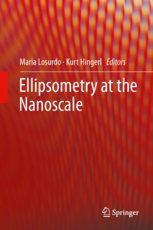 [2016]
[2016]